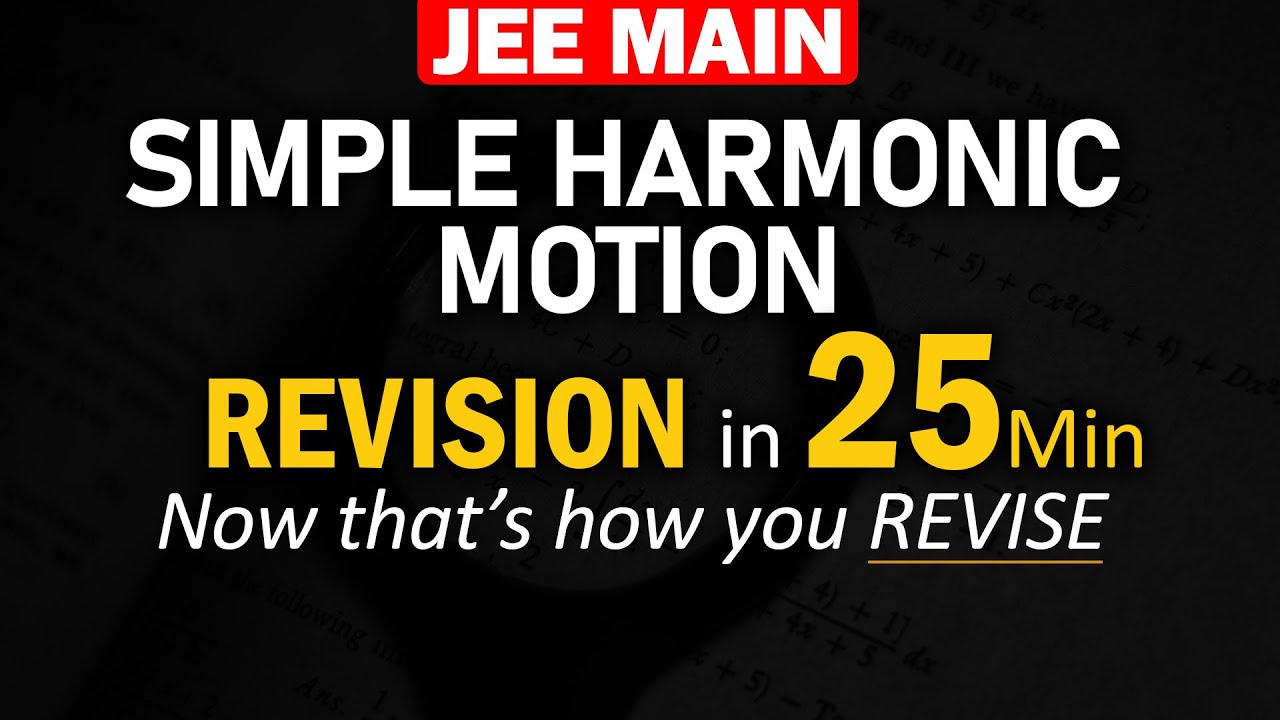Introduction to Oscillators
Summary
TLDRThis lecture introduces oscillators, systems that exhibit periodic motion, illustrated through examples like pendulums and springs. It explains the transformation of energy between kinetic and potential forms, defining key concepts such as amplitude, period, and frequency. The speaker discusses how external forces can do positive work, adding energy to the system, and explores the concept of resonance, which can lead to energy buildup. Conversely, negative work from damping forces like friction reduces energy and dampens oscillations. Overall, the lecture provides foundational insights into the behavior of oscillators and the effects of external influences.
Takeaways
- 😀 An oscillator is a system that exhibits periodic motion or behavior, such as a pendulum.
- 😀 The energy of an oscillator, like a pendulum, transforms between kinetic energy and potential energy as it moves.
- 😀 Amplitude refers to how far the oscillator swings, indicating the energy level; larger amplitudes mean more stored energy.
- 😀 The period (T) is the time it takes for one complete cycle of oscillation, while frequency (f) is the number of cycles per second, expressed in Hertz (Hz).
- 😀 The Earth's orbit around the Sun is an example of periodicity, taking 365 days to complete one cycle.
- 😀 When an external force does positive work on the oscillator, it adds energy, enhancing its motion.
- 😀 Resonance occurs when an external force is applied in sync with the oscillator's natural motion, potentially leading to energy accumulation and even destruction of the oscillator.
- 😀 Negative work is done when an external force opposes the motion of the oscillator, resulting in energy loss.
- 😀 Damping forces, such as friction and air resistance, act in opposition to the motion of the oscillator, reducing its energy and amplitude over time.
- 😀 Understanding oscillators is crucial for studying waves, energy transfer, and many physical systems.
Q & A
What is an oscillator?
-An oscillator is a system that exhibits periodic motion or behavior, repeating its movement over time.
Can you give an example of a simple oscillator?
-A simple example of an oscillator is a pendulum, which consists of a mass attached to a string that swings back and forth due to gravity.
What happens to the energy in a pendulum as it swings?
-As the pendulum swings, its energy transforms between potential energy at its highest points and kinetic energy at its lowest point.
What is amplitude in the context of oscillators?
-Amplitude is the maximum displacement of the oscillator from its equilibrium position and indicates the amount of energy the oscillator has.
What is the difference between period and frequency?
-The period is the time taken to complete one cycle of motion, while frequency is the number of cycles per second and is inversely related to the period (f = 1/T).
What unit is frequency measured in?
-Frequency is measured in Hertz (Hz), which represents cycles per second.
How does a mass-spring system function as an oscillator?
-In a mass-spring system, a mass attached to a spring oscillates up and down when energy is added or removed by compressing or extending the spring.
What is resonance in oscillators?
-Resonance occurs when an external force is applied in sync with the oscillator's motion, allowing it to gain energy rapidly, potentially leading to destructive effects.
What is negative work in the context of oscillators?
-Negative work occurs when an external force opposes the motion of the oscillator, removing energy from the system, which can lead to a decrease in amplitude.
What are some examples of damping forces?
-Examples of damping forces include friction and air resistance, which act in opposition to the direction of motion and reduce the oscillator's energy.
Outlines

此内容仅限付费用户访问。 请升级后访问。
立即升级Mindmap

此内容仅限付费用户访问。 请升级后访问。
立即升级Keywords

此内容仅限付费用户访问。 请升级后访问。
立即升级Highlights

此内容仅限付费用户访问。 请升级后访问。
立即升级Transcripts

此内容仅限付费用户访问。 请升级后访问。
立即升级浏览更多相关视频

O que é uma Onda?

Getaran dan Gelombang (Part 1) || Getaran Kelas 8 SMP

Intuition about simple harmonic oscillators | Physics | Khan Academy

Periodic Motion | Definition/Examples

Simple Harmonic Motion & Damped Motion | lect.-01 | Classical Mechanics #physics #bsc

Simple Harmonic Motion | Formulae and Concept REVISION in 25 min | JEE Physics by Mohit Sir (IITKGP)
5.0 / 5 (0 votes)
